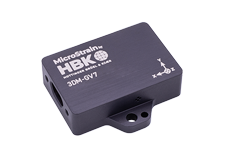Author:
Publication:
- AINonline.com
Wireless health usage and monitoring systems (Hums) are currently flying experimentally in four U.S. military rotorcraft. If the system proves successful, it could one day be standard equipment on all military and civilian helicopters for a price predicted to be 90 percent less than that of current wired systems, which cost up to $200,000 each. Past success with wired systems used to measure structural loading on Navy F/A-18s suggests that a wireless Hums could double an aircraft’s useful life and provide significant ongoing maintenance and operational cost savings. It could also be used as a training tool for pilots and to report an aircraft’s condition, including exceedances, in real time to an operations center. ...
The premise is simple, said Steve Arms, president of MicroStrain, the Vermont company that has developed the technology. “You can extend the life of rotating parts if you track them more accurately.” Arms says regime recognition, the current system of using slip rings and wired strain gages on a few test helicopters, generally during certification of airframes and follow-on components, is a poor predictor of part health and life on individual helicopters.
Sensor data is then transmitted to a wireless sensor data aggregator (WSDA), a hand-sized device that is basically a single-board computer running on the Linux operating system. The WSDA includes Ethernet, USB and Arinc 1553 connectivity as well as wireless IEEE802.15.4 in the 2.4-GHz radio frequency band. Commercial WSDAs use a GSM cellphone that pushes data to the cloud where it is hosted on a secure server. The WSDA also features an embedded inertial sensing suite that provides vehicle pitch, roll and yaw data as well as triaxial accelerations and triaxial angular rates. It uses temperature-compensated, commercial, microelectro-mechanical inertial and magnetic sensors that are similar to those found on the stability systems of modern automobiles.
“You have the pilot do different maneuvers and fly different regimes and then record the worst-case scenarios to estimate usage,” said Arms, who called the process “a relatively coarse way of determining the life of the parts. The same pilot can fly a similar regime on the same aircraft and get vastly different loads on rotating structures.” The MicroStrain system can be used to measure strain and vibration on rotating parts and vibration on non-rotating parts. ...
To read the article in full, click here.










